Does Angle Change Distance Traveled of Bullets
Bullet Trajectory: Shooting Downhill and Uphill
Making precise hits when shooting downhill and uphill has morphed from dark wizardry to science over the past several decades.

Nov 14, 2015
As laser rangefinders came into beingness, and ballistic apps, precision rifles and riflescopes evolved to support longer-range shooting, defended riflemen delved deeper into ways to predict a bullet's path. Here's a await at several of the tools of the merchandise, tools that, properly used, volition help you lot eliminate guesswork when shooting uphill and downhill.
But outset, permit'south touch lightly on the basic physics of shooting downhill and uphill only to be certain that pop myths of the by are debunked, and that the forces that work on speeding projectiles are understood.

Many moons ago, it was popular to believe that when take shooting uphill, a bullet would hitting high, and when shooting downhill, a bullet would shoot low. That notion has gone the way of iron sights. In truth, gravity exerts maximum influence on a traveling bullet when its path is level, perpendicular to the world's pull.
When a bullet's path is angled high or low, gravity exerts more effect on velocity (which doesn't alter a projectile's path appreciably) and less effect on its path. As a upshot, trajectory suffers less earthward "bend" and the bullet flies on a straighter path. The takeaway? Bullets hitting high when shooting down and up.
Another trend amid shooters, fifty-fifty those of considerable skill, is to overestimate angles. I've seen lifelong old-schoolhouse riflemen squint upwards a slope and proclaim, "That's steep... Say thirty degrees," when in reality, it's less than 15 degrees.
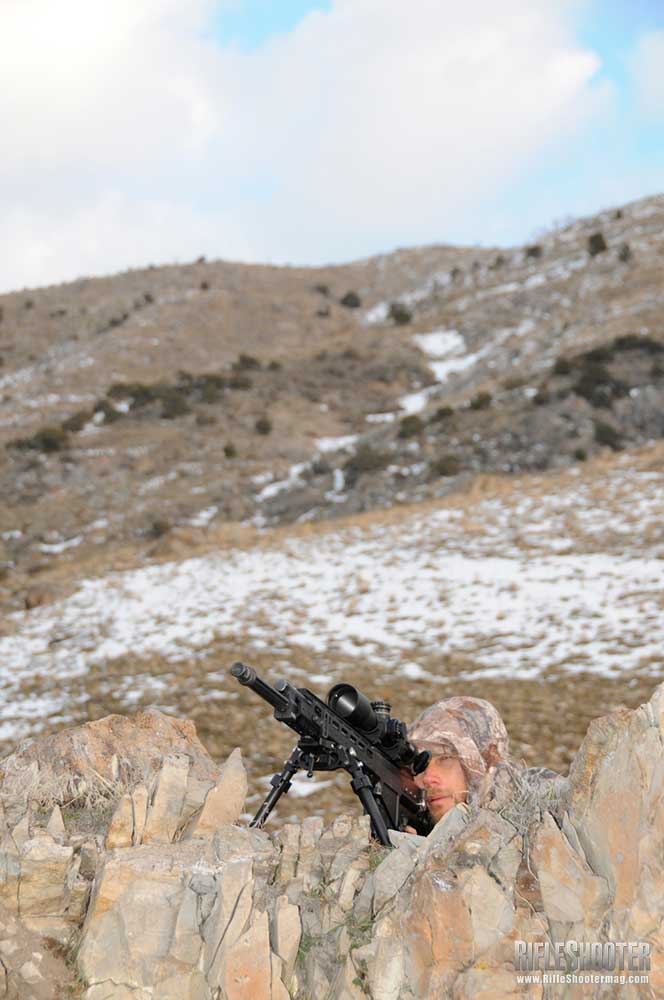
Compensating when shooting downhill and uphill is a science, not voodoo, but yous've got to have an accurate read on the angle for your compensation to be accurate. Bending can be measured many ways, ranging from scope-mounted gadgets, to smart-phone apps, to laser rangefinders that measure and display it. We'll take a closer look at various angle-estimating tools shortly.
In one case y'all've measured the bending, you've got to summate how much that bending will affect your bullets' point of impact.
True Ballistic Distance (TBR)
A very simple way of doing this is to calculate the "true ballistic range," which is the horizontal altitude between you and the target. If you're good at math (which I'm not) you can run a simple calculation based on the cosine of the angle (which you've measured) and the distance (which a rangefinder provides) and work out the horizontal distance to your target. More on that procedure in a bit.
Once calculated, dial your scope or hold over for the horizontal distance, and bold an accurate rifle and correct shot execution, you'll hit your target.
A much easier and more efficient way to attain this is to apply a rangefinder provided with an internal calculator that runs the numbers for you, and spits out the TBR. With your laser rangefinder set to produce TBR, computing your right holdover is as unproblematic as ranging the target, dialing or belongings for the TBR rather than the actual altitude to the target, and shooting.
This procedure works on both uphill and downhill shots (up to 65 degrees or so) and, without incertitude, is the fastest mode to overcome the challenge of shooting at angles.
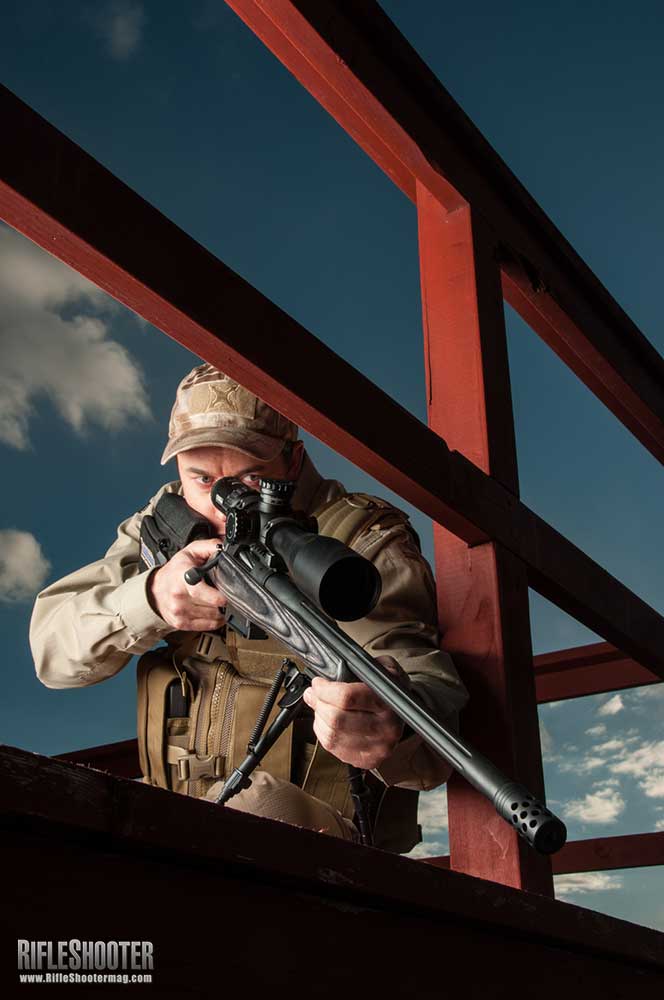
Angle Indicators, Cosines, and Calculations
What if your rangefinder doesn't calculate and provide TBR? The first step is to equip yourself with a device that measures angle. Scope-mounted angle indicators — also termed angle cosine indicators — are popular amidst long-range precision riflemen. Various manufacturers offer them, and equally in all aspects of equipment, you become what you pay for. Good ones range over $100.
Recommended
With the bending measured, you tin can reference the respective cosine, multiply it by the distance in yards, and utilize the resulting number in yards as your actual shoot-to range. The accompanying charts provide the reference numbers necessary. For instance, if the shot angle is 35 degrees, the respective cosine number is 0.819. Multiply your range — say 700 yards for the sake of give-and-take — by 0.82 (cosine rounded), and you lot come up upwards with 574 yards. Dial or concur with your reticle for 574 yards, and shoot. Information technology's effective and authentic, but tedious.
A simpler style of looking at this process is to consider cosine as a percentage of the actual distance to target, which it basically is. For instance, if your angle indicator reads close to xx degrees, cosine (0.940) percentage would indicate to shoot for 94 percent of the actual distance.
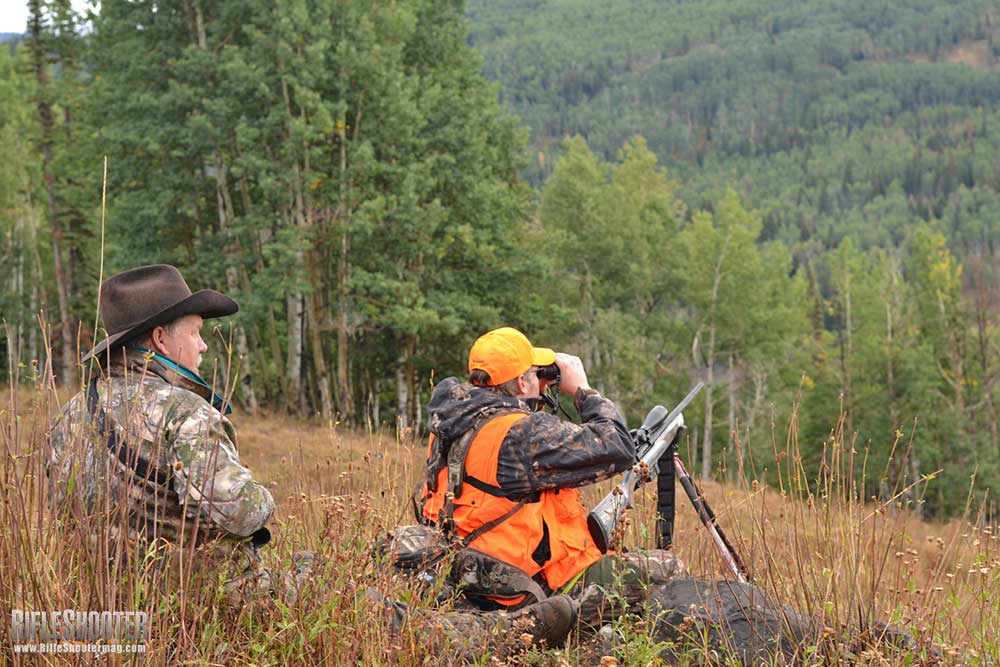
Keeping it simple, permit'south say that your shot distance is 1,000 yards. Hold for 940 yards, or 94 percent of the actual distance, and shoot. More math is required for most distances: for example, if your rangefinder reads 862 yards and the angle 50 degrees (cosine 0.64), unless y'all're a math wizard you'll have to dig out the calculator. Multiply 862 yards by .64, and y'all go a shoot-to distance of 552 yards.
Here's a nautical chart, courtesy of the SAAM shooting school at the FTW ranch, showing angle cosine/actual-distance percentages:
Angle/Degree to Cosine Multiplier
Caste of angle - Multiplier of Measured Yards
- 5 - .99 or 99%
- 10 - .98 or 98%
- xv - .96 or 96%
- 20 - .94 or 94%
- 25 - .91 or 91%
- xxx - .87 or 87%
- 35 - .82 or 82%
- twoscore - .77 or 77%
- 45 - .lxx or 70%
- fifty - .64 or 64%
- 55 - .57 or 57%
- 60 - .fifty or 50%
- 65 - .42 or 42%
- 70 - .34 or 34%
- 75 - .26 or 26%
- 80 - .17 or 17%
- 85 - .09 or 9%
- 90 - .00 or 0%
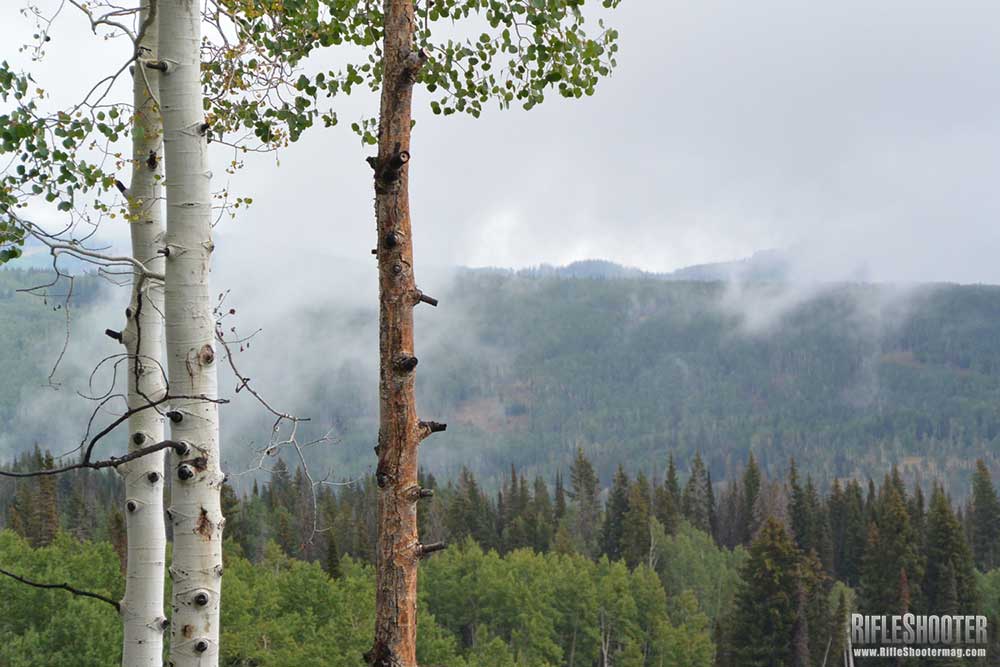
Every bit you tin see, until angles get quite acute, bullet signal of impact isn't affected all that much. Inside of 300 yards, yous've got to be at a really steep bending before you lot demand to worry virtually it at all. Consider this: If yous're taking a shot on a mule deer with a 10-inch vital zone on a ridge, at a 30-caste angle above you lot, a quick adding (300 multiplied by the 30-degree cosine per centum 0.87) will show you that your shoot-to distance is 261 yards.
A common .30-06 load pushing a 165-grain Nosler Ballistic Tip bullet impacts fractionally more than 3 inches of difference between 260 and 300 yards. You'll be merely fine holding center on vitals, fifty-fifty at that quite-steep thirty-degree angle.
Every bit distance increases, angle becomes far more critical. Although very long shots are rarely taken at astute angles, for the sake of argument, permit's consider a 600-yard shot with that aforementioned .30-06 load, taken at the same 30-caste angle. A calculation (600 yards multiplied past 0.87) shows the shoot-to distance every bit 522 yards. Betwixt 520 yards and 600 yards the point of affect differs most 25 inches—way more than acceptable with an on-target concord.
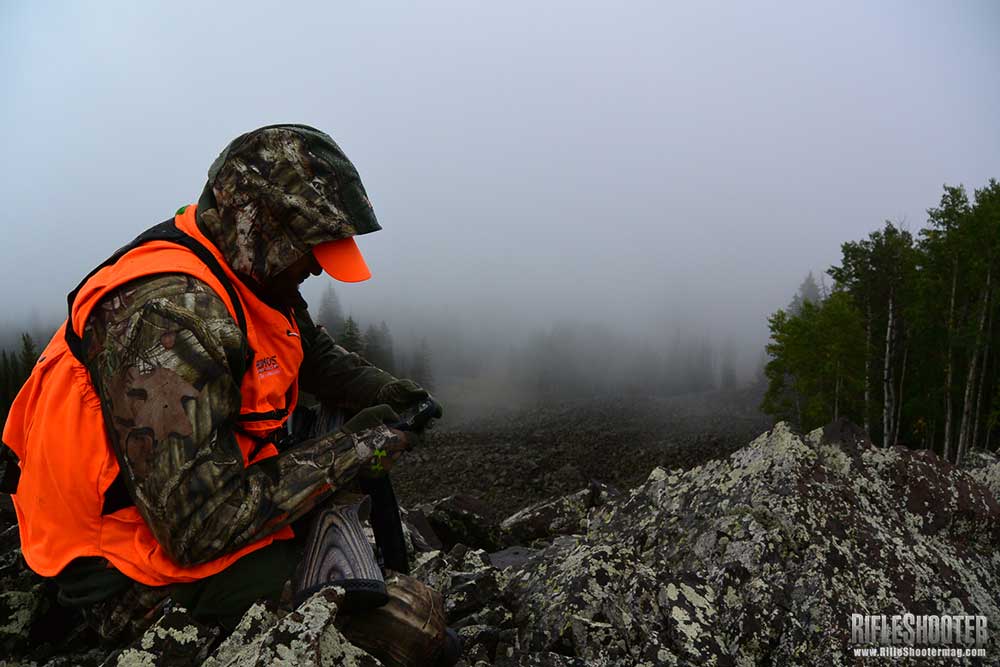
Taking the concept to drastic lengths, let'due south consider the sort of uphill or downhill shot occasionally encountered by mountain goat and bighorn sheep hunters, and even desert- or alpine-state mule deer hunters: Imagine the animal you're after has bedded at the base of operations of a massive cliff for the day, and you spent the morning hiking around and getting above it. The distance is 450 yards; well within the ethical range of an accomplished rifleman with a precision rifle.
Nevertheless, the bending is most vertical, and you've got to literally hang over the cliff face to shoot downhill. After anchoring yourself securely to a nearby boulder, you lot mantle over, center in your throat, and get an angle measurement on the animal far below: it'south eighty degrees. Your calculation (450 yards multiplied by the 80-degree cosine percentage 0.17) establishes 76 yards as the horizontal distance, or TBR.
Here's where information technology gets really tricky. Considering y'all've got your burglarize sighted in at 200 yards, your bespeak of impact is typically 1.thirty inches high at 75 yards, and when pointed at eighty degrees angle, gravity isn't going to pull your bullet back downward to run into your line of sight at 200 yards. Nope: that bullet is going to go on to deviate away from your line of sight and will hitting considerably higher than anticipated.
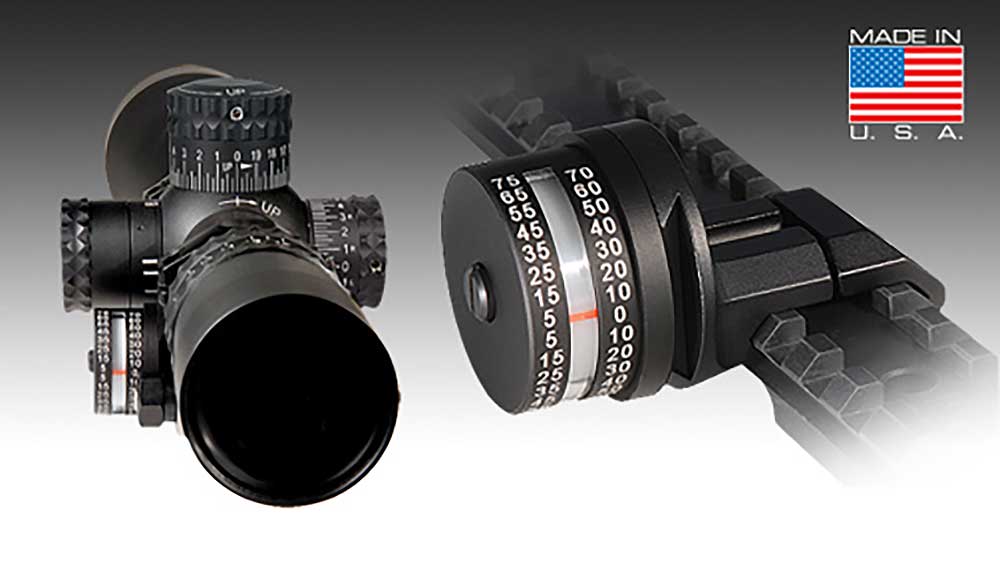
If your rifle was sighted to send that bullet'due south path in a true parallel to your line of sight, you'd be ok, merely sighted in such a fashion would exist completely impractical in the world of typical, about-level shots where gravity plays a major force in directing that bullet's flight path.
So what practice yous do? Almost savvy hunters, up against fourth dimension and nether extreme pressure from hanging over a cliff and attempting a very hard shot without dropping their expensive rifle, just concord a little low on the brute if they call back almost it at all. In nearly cases, information technology's not enough, and an unfortunate rodeo of missed shots and cusswords follow.
Situations like this are where a smart phone with a capable ballistic app makes all the deviation. Yous can tell your phone app where your burglarize is sighted, plug in the angle, and it will tell you lot exactly where you lot'll hit. In the above situation, with the rifle zeroed at 200 yards, your 450-yard signal of touch on an 80-caste shot will be over 13 inches "above" your crosshairs, even without dialing up at all. Really.
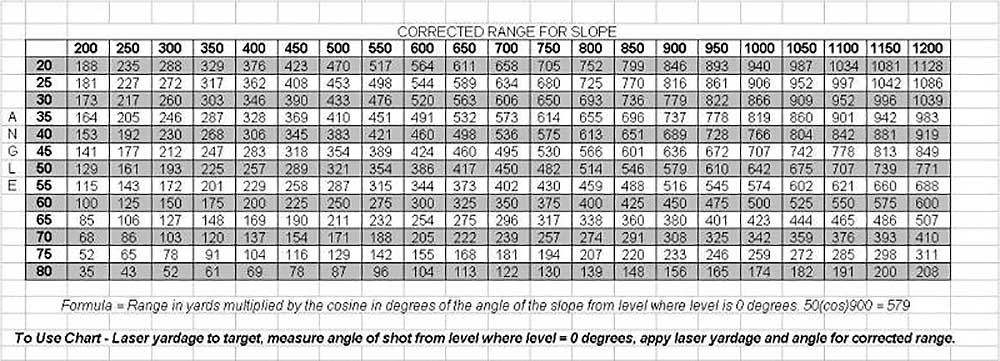
Smartphone Apps and Angles
Another way to measure when shooting downhill or uphill is using the ballistic app on your smartphone, bold your chosen app offer such a function. If it doesn't, add some other app that does. I utilise the $x version of "Ballistic," which enables me to lay my iPhone on the apartment top surface of my telescopic'due south elevation turret, or on the acme flat of my barrel out where it doesn't taper much, and measure the angle.
One time measured, I tin lock information technology in and tap the summate button, and the telephone volition produce holdover with the event of the angle calculated in. It'south an accurate way to go, but does take time. You've got to get the target in your crosshairs, get your phone app chosen up and ready to read angle, position information technology on your rifle, lock in the reading, run the calculation and then (finally) punch or hold and take the shot.
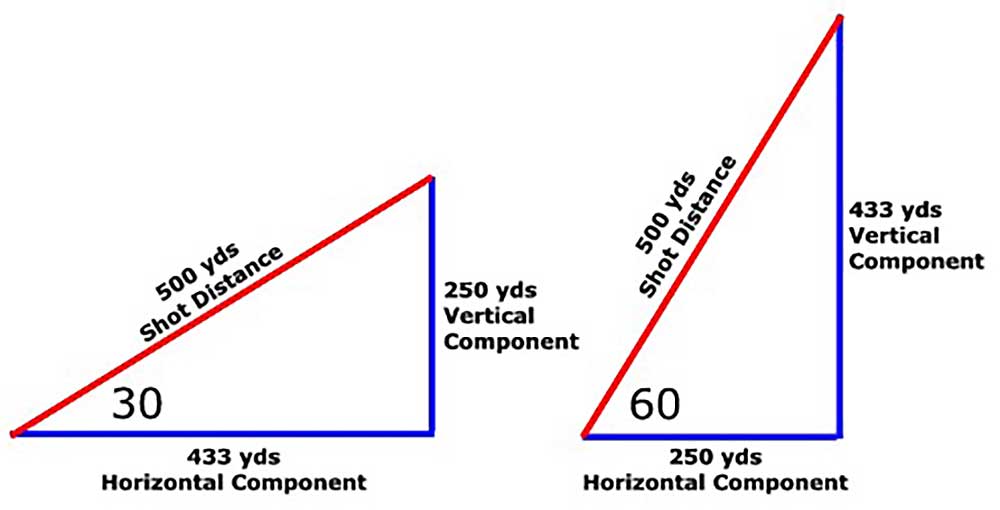
In the obscene-angle scenario discussed above, you lot've got time, and you'd best take it if you're going to make the shot. Simply don't drop your telephone off the cliff.
Shooting at angles can exist challenging if you lot savor reaching way out and hunt, compete, or recreationally shoot in broken state. Accepting the challenge and building the skills to overcome it can exist incredibly rewarding. Find a method that works for you, whether information technology'southward using a rangefinder that calculates TBR, or mounting an bending/cosine indicator on your burglarize and carrying the necessary charts to enable you to run accurate calculations, or using a smartphone app, and practise with it.
If you alive in flat country, you'll take to travel. For those in the West, rugged public-country state is ideal. Get out and shoot at targets of opportunity, condign proficient with your system and building the skills necessary to make shots at any angle.
At the moment of truth, whether information technology be on game or on targets, an understanding of shooting downhill or uphill volition give yous an edge that may brand all the difference.
0 Response to "Does Angle Change Distance Traveled of Bullets"
Post a Comment